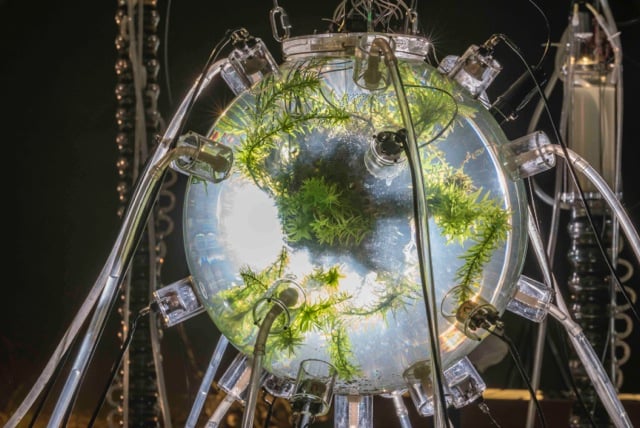The blending of art and science gave rise to bioart, a groundbreaking concept. It uses living organisms and biological procedures as a vehicle for artistic representation. This combination challenges our assumptions about the nature of life, ethics, and aesthetics. It blends the accuracy of biotechnology with the limitless creativity of artists. Together, they probe the dynamic interplay between biological life and the creation of art.
Artists in this field frequently cooperate with scientists, embracing biotechnological approaches. They venture into a world where art is not just seen or felt but is alive and evolving. They journey into a universe in which art is more than simply seen or felt; it continues to exist and arise. These fresh take not only challenges the limitations of established creative genres but also provokes important discussions. It discusses the ethical issues of utilizing life as a canvas. Bioart is at the forefront of a new artistic epoch, challenging and rethinking the essence of creation and existence.

The Essence of Genetically Modified Art
Genetically modified art, a component of bioart, focuses on the modification of genetic material to create live artworks. Artists modify DNA sequences in order to generate organisms that reflect desirable attributes, like fluorescent proteins, and then merge them into living installations. This alteration not only reduces the distinction between natural and artificial, but it also sparks a deep discussion about possible consequences of genetic engineering.
Techniques and Technologies
Bioart and genetically modified art rely significantly on advanced biotechnologies like CRISPR-Cas9 for gene editing, tissue culture, and synthetic biology. These tools enable artists to manipulate microorganisms, plants, and animals, shifting them into media to display inventive concepts. The process of creating artwork is complicated and often demands the artists operate within the limits of a laboratory, following scientific regulations while seeking their artistic aspirations.
Ethical Considerations and Controversies
Concerns regarding ethics are necessarily generated by bioart’s engagement with living systems. The artificial creation and enhancement of biological forms, particularly in genetically engineered art, has sparked controversy. It is about the ethical costs of generating and manipulating life for art’s sake. Critics dispute the limits of artistic freedom when sentient beings are involved. They also question the possible discharge of genetically engineered organisms into the environment.
The Role of Bioart in Society
Bioart acts as a mirror, reflecting people’s views toward biotechnology, ethics, and the future of mankind. Bio-artists spark public dialogue through exhibitions. These discussions explore critical issues like genetic engineering, environmental protection, and our connection to other living beings. This conversation is vital as biotechnology rapidly changes our world. By fostering open dialogue, we can ensure responsible use of these powerful technologies.
Notable Bio-artists and Their Work
Eduardo Kac is widely recognized for his work called “GFP Bunny,” which features Alba, a rabbit genetically engineered to turn green under blue light, illustrating the nexus of genetics, art, and ethics. Joe Davis is another pioneer who inserted a Germanic rune merging of nature and human civilization. These artists, among others, disrupt our preconceived notions and prompt reflection on the deeper meanings of life and art.
Exploring New Horizons
Bioart and genetically modified art are gaining exponential potential for innovation and exploration. Artists are exploring ways to integrate biological processes into their work, leading to real-time art that interacts with its environment. This exploration goes beyond static pieces, involving living, breathing projects that can change, evolve, and reproduce. Advancements in biotechnology and genetic engineering allow artists to experiment with life as a medium, raising questions about the role of creation and creator responsibilities. This push towards uncharted territories broadens artistic expression and deepens our understanding of life’s complexities and our interconnectedness with the natural world.

Bioart and genetically modified art redefine the bond we have with the natural environment by combining art, science, and ethics into a single, interconnected discourse. This fusion causes us to reconsider our responsibilities as creators and protectors of the ecosystem. It provides a unique perspective through which we may investigate the limitations and possibilities of biotechnology breakthroughs. As this creative movement develops, it not only challenges the boundaries of traditional art forms, but it also acts as an important platform for public participation. It promotes discussions on the moral quandaries of adjusting life for aesthetic goals. Bioart fosters a wider, more nuanced comprehension of the responsibilities that come with advancement in science. Finally, it assures that we conduct our way into the biotechnological frontier with both innovative vision and ethical foresight, balancing the quest for creativity with the responsibility to cherish and uphold the sacred nature of life.






